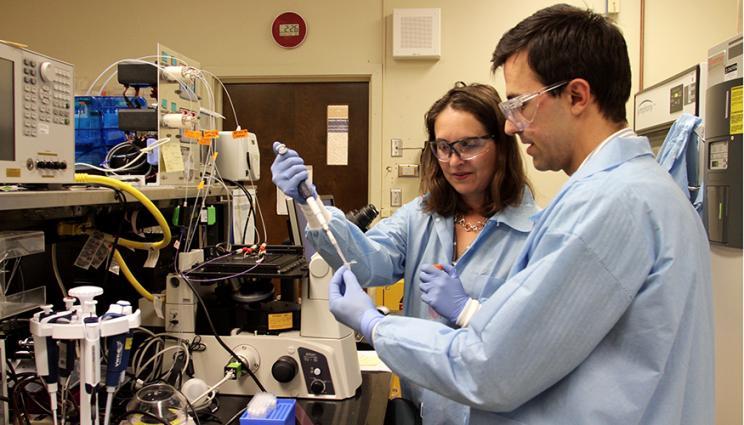Chemical amplification, such as Polymerase Chain Reaction (PCR) is a method widely used in molecular biology to rapidly make millions to billions of copies of a specific DNA in a sample. During the last decade, several improvements to this technology have been made. Improvements in this technology include techniques for faster heating and cooling of the samples and smaller reaction samples. Here we describe a new improvement of this technology that relates to chemical amplification and more particularly to fluid partitioning between polymeric sheets. This invention can also be applied to isothermal amplification processes and other DNA detection methods.
This technology describes a method for partitioning fluid into “packets” between polymeric sheets. The fluid to be partitioned is introduced between two polymeric layers or within a polymeric channel and the layers are sealed together to form an array or sequence of individual milliliter to picoliter samples as shown in figure below. This approach allows a continuous flow of samples through the system and minimizes reaction and processing times. The invention described herein provides several advantages for DNA (or RNA) detection over the approach of suspending droplets in an immiscible fluid. The partitioned packets can be used in any assay such as PCR, isothermal amplification or other types of chemical or enzymatic analysis. The technology is also applicable to single-cell analysis.
- Flexible framework for the partitioned samples that allows more direct handling and facilitates processing
- Decreasing the time for heating and cooling and the resultant reduction in time to detection
- Simultaneous generation and detection of many samples in a row or array, again reducing overall detection time
- Increasing the throughput for sample partitions
- DNA/RNA detection
- Drug discovery
- Biomedical detection (virus, pathogen)
- Genome Sequencing


